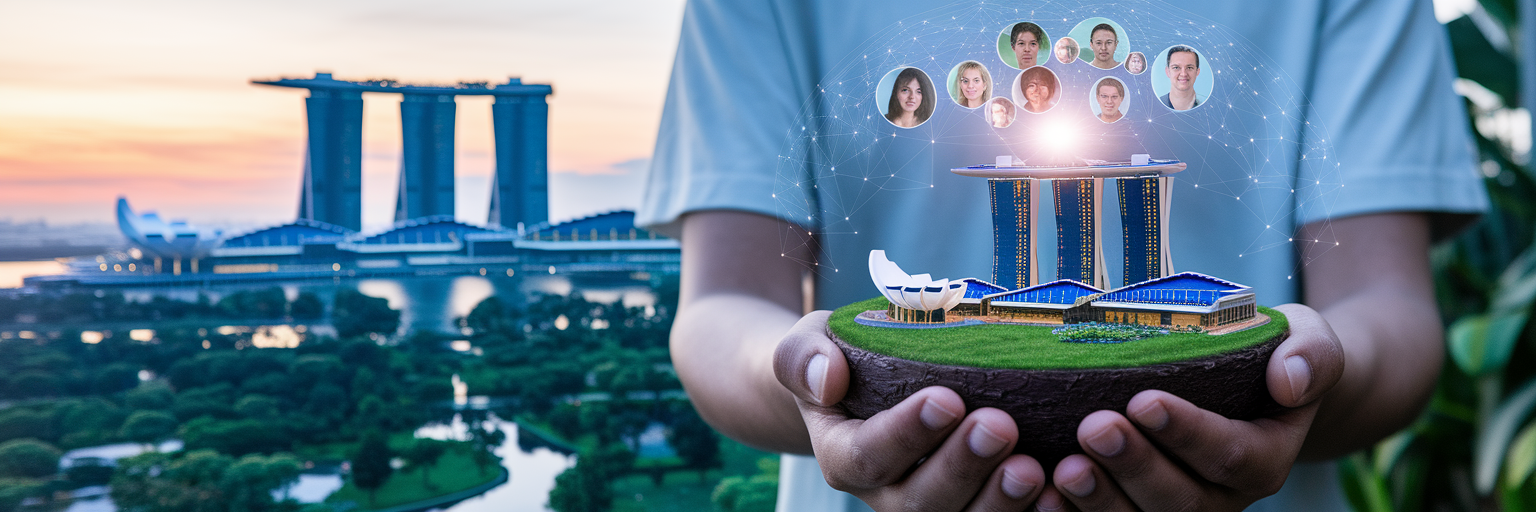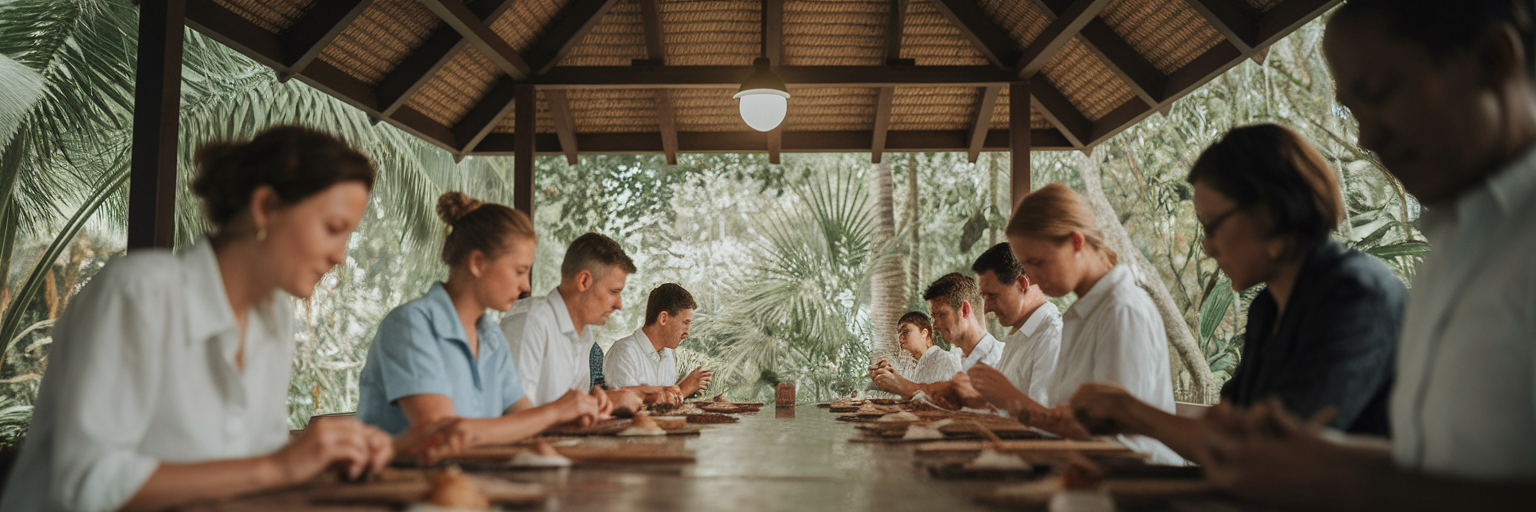How to Plan Sustainable Incentive Travel in a Hybrid World
Discover the blueprint for creating meaningful corporate incentive trips by combining sustainability, inclusive hybrid technology, and authentic local experiences in Singapore and beyond.

Discover the blueprint for creating meaningful corporate incentive trips by combining sustainability, inclusive hybrid technology, and authentic local experiences in Singapore and beyond.

The post-pandemic work culture has fundamentally shifted what people value. A simple bonus or a generic beach holiday no longer carries the weight it once did. Today’s top talent is driven by purpose, seeking experiences that offer personal growth and align with their ethical commitments. This change has reshaped corporate rewards, moving them from material perks to meaningful journeys.
Incentive travel is no longer just about luxury. It is about connection, impact, and legacy. This is where destinations like Singapore excel, offering a blueprint for the future of MICE events in Singapore. With its robust infrastructure and a national commitment to sustainability, exemplified by the Singapore Green Plan 2030, the city-state provides a fertile ground for purpose-driven corporate gatherings. The challenge for modern businesses is to capture the magic of travel while ensuring accessibility and responsibility.
By blending the allure of physical travel with the inclusivity of a hybrid format, companies can meet ambitious ESG goals without compromise. This approach creates a powerful narrative. It tells your team that you value not only their performance but also their principles. The benefits extend far beyond a single trip, leading to improved employee loyalty, stronger brand equity, and a positive social legacy that resonates with clients and stakeholders alike.

Transforming an incentive trip into a truly sustainable experience requires a deliberate and comprehensive strategy. It goes beyond simply asking a hotel to skip changing the linens. It involves embedding environmental consciousness into every decision, from the initial concept to the final farewell. The complexity of orchestrating such eco friendly corporate events often highlights why professional management is crucial for success.
The foundation of a green event is its physical location. When selecting venues in destinations like Singapore or Thailand, prioritise partners with recognised green certifications, such as Singapore's Green Mark scheme. These venues are designed with energy-efficient systems, advanced water conservation methods, and often incorporate biophilic design that connects participants with nature. Choosing a partner who already shares your commitment to sustainability simplifies the entire process and ensures your goals are met with expertise.
An event's footprint is heavily influenced by logistics and material consumption. A few high-impact strategies can dramatically reduce environmental harm. Consider implementing:
These actions are not just symbolic. They represent a tangible commitment to minimising waste and promoting a circular economy within the event itself.
A hybrid format inherently lowers an event's carbon footprint by reducing the number of attendees who need to travel. As analyses from sources like Reuters Events have shown, this model can significantly cut emissions. For the carbon footprint that remains, it is vital to calculate the total emissions from travel, energy, and waste. The next step is to invest in high-quality, verified carbon offsetting projects. To maximise social impact, choose projects that benefit communities in Southeast Asia, such as reforestation initiatives or renewable energy development, turning your event into a force for regional good.
| Category | Action Item | Primary Impact |
|---|---|---|
| Venue | Select Green Mark certified hotels or venues | Reduces energy and water consumption |
| Catering | Source ingredients from local, organic farms | Lowers food miles and supports local economy |
| Materials | Implement digital check-ins and event apps | Eliminates paper waste |
| Transport | Arrange electric vehicle transfers or group transport | Minimises transport-related carbon emissions |
| Waste | Ban single-use plastics; use reusable tableware | Diverts significant waste from landfills |
This checklist provides a framework for integrating sustainability into key event planning stages. The selections are based on high-impact actions that are feasible for corporate events in destinations like Singapore and Thailand.
A truly successful incentive program is one where every single person feels seen, heard, and valued, regardless of their location or language. In a globalised workforce, especially across the diverse APAC region, inclusivity is not an add-on but a core component of success. Effective hybrid event planning APAC strategies are built on a foundation of accessibility, ensuring that digital and physical attendees share an equally rich experience.
For a multinational team, language barriers can quickly create feelings of exclusion. Modern multilingual event solutions are essential for breaking down these walls. Imagine a keynote speech where participants can select real-time audio translation or captions in their native language through their smartphone. This is now a reality with AI-powered technologies. This trend is gaining momentum, with a recent report from Multilingual highlighting how the Singapore Tourism Board partnered with Green Terp Technologies to enhance multilingual engagement. Implementing such tools sends a powerful message: we respect your identity and want you to participate fully.
The greatest challenge of a hybrid event is preventing remote attendees from feeling like passive observers. Creating a unified experience requires deliberate design focused on interaction. To achieve this, you must go beyond a simple livestream and build pathways for genuine connection. Here are a few steps to consider:
These tools help dissolve the screen, fostering the kind of emotional connections and engagement that build strong, cohesive teams.
Inclusive event design extends beyond language and interaction. It encompasses physical and digital accessibility for all abilities. This means selecting barrier-free venues with ramps and accessible restrooms for in-person attendees. For virtual participants, it means choosing an event platform with an intuitive interface, clear navigation, and compatibility with screen readers. Every detail, from the font size on a presentation to the layout of a room, contributes to an environment where everyone can participate with dignity and ease.

The most memorable incentive trips are those that move beyond the confines of the hotel ballroom and connect participants with the heart of a destination. Authentic cultural immersion and community engagement are the cornerstones of modern, sustainable incentive travel Singapore and beyond. These experiences create deeper, more lasting memories than any generic luxury activity because they are rooted in genuine human connection and shared purpose.
Designing an itinerary that fosters these connections requires a thoughtful approach. Instead of just observing a culture, participants should be invited to take part in it. This transforms them from tourists into active contributors. Consider incorporating purposeful activities such as:
By sourcing from local businesses, collaborating with artisans, and promoting cultural heritage, your event becomes a vehicle for positive economic and social impact. Our expertise in destinations like Thailand allows us to curate these unique moments, drawing on the rich network of creators and communities we work with from our Bangkok office. These bespoke services ensure that every itinerary is not only impactful but also deeply respectful of the host community.
How do you measure the return on an incentive trip that is built on purpose and connection? The traditional metrics of budget adherence are no longer sufficient. The true value of a sustainable and inclusive incentive program lies in its impact on your people and your brand. Success should be measured through a new lens, one that captures human and cultural capital.
Look for shifts in employee engagement surveys conducted before and after the trip. Track improvements in retention rates among your top performers. Most importantly, gather qualitative feedback to understand the stories and emotional takeaways that participants bring back with them. Did the experience strengthen their connection to the company’s values? Did it inspire new ways of thinking or collaborating?
These purpose-driven events become powerful brand assets. The stories, images, and testimonials can be featured in corporate communications and sustainability reports, bolstering your reputation among clients, investors, and future talent. By integrating deep sustainability, technological inclusivity, and authentic community connection, you are not just rewarding your team. You are making a strategic investment in a resilient, engaged, and purpose-driven company culture. It is time to view incentive travel not as an expense, but as a powerful tool for building a better business and a better world. If you are inspired to create such experiences, we encourage you to learn more about the team behind these ideas.